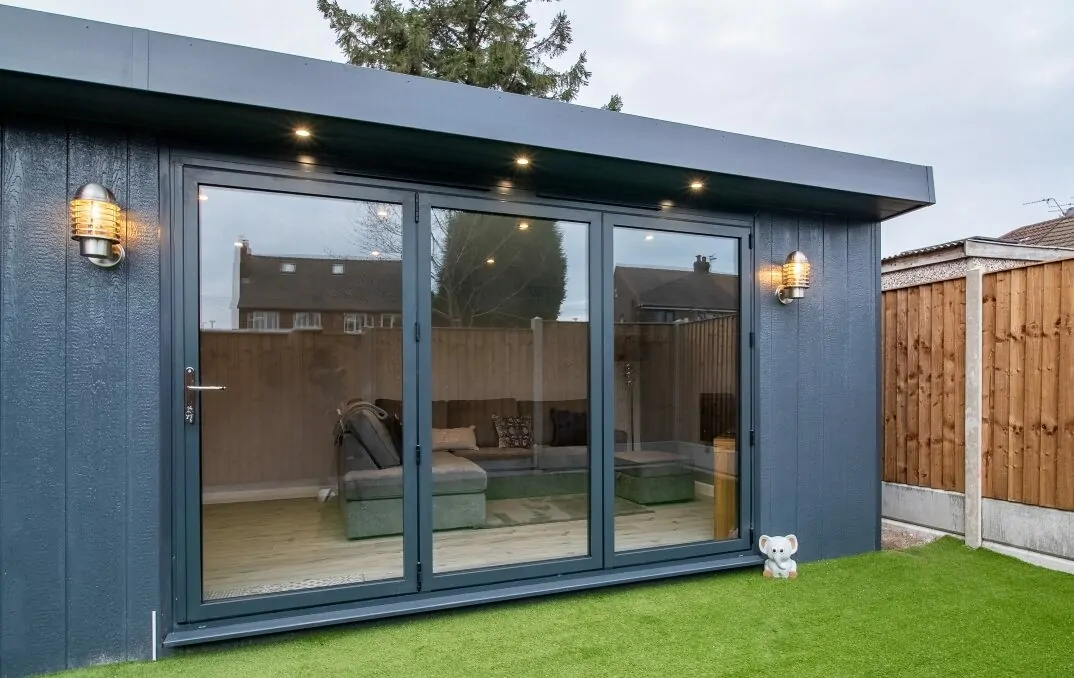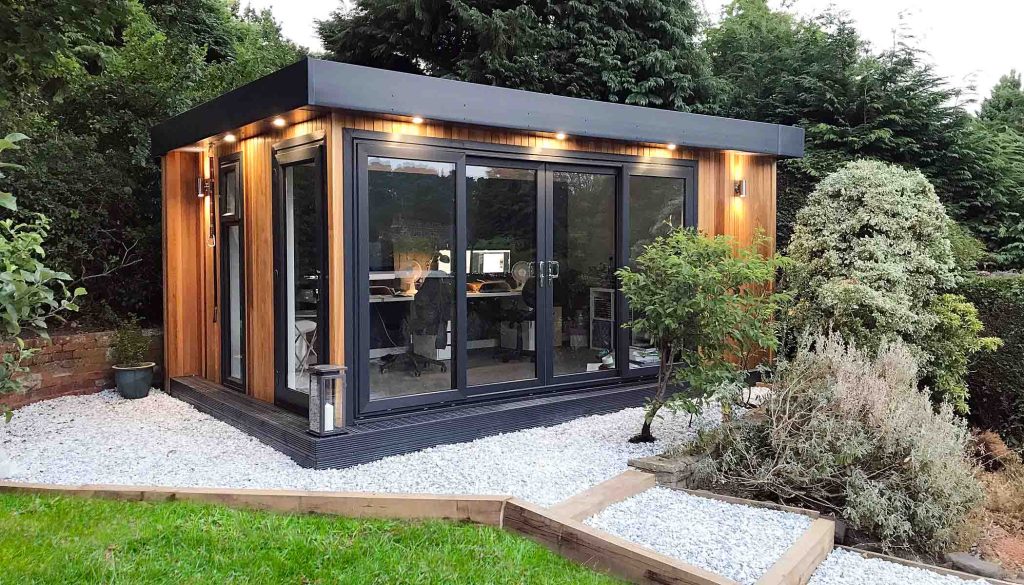Handy Reasons On Planning Permission On Garden Conservatories
Handy Reasons On Planning Permission On Garden Conservatories
Blog Article
What Kind Of Planning Permissions Will You Need To Construct Garden Rooms In Conservation Areas?
When building garden rooms, conservatories outhouses, gardens offices, or extensions within conservation areas, specific restrictions apply to preserve the appearance and character of the areas designated for conservation. Here are the main factors to consider when planning permission is granted in conservation areas: General Restrictions:
In conservation zones, any structure or extension that would normally fall within permitted development might require planning permission. Sheds, garden rooms or other outbuildings are included.
Size and Scale
Any structure, regardless of its size, may need planning permission if it's believed that the structure will impact the conservation area's characteristics. In designated areas, there are stricter limits on the dimensions and shape of new structures or extensions.
Location of the property:
The majority of the time, planning permission is required for any buildings or extensions situated on the front and side of a home. Planning permission may be required for rear structures when the structure is visible from public areas or has an impact on the character of the property overall.
Materials and Design
The selection of materials and design is crucial when it comes to conservation zones. Any new building or extension must be constructed using materials that are conforming to the historic or architectural significance of the region. To meet these standards, you'll require planning permission.
Demolition:
In conservation areas, it is essential to get planning permission prior to the demolishment of any existing structure or portion of a structure, which includes outbuildings or boundary walls. This is to ensure all modifications do not change the nature of the area.
Height Restrictions
There are more strict height restrictions in conservation areas. If a building is greater than 2.5 meters in height It is highly likely that the planning permit will be required.
The impact on surrounding areas
If the proposed building or extension has a significant impact on the appearance of the conservation area, or the setting that includes views out and into the conservation area, permission for planning will be required.
The use of the building
Planning permission may be required even if the garden or outbuilding is within allowed dimensions. This could result from an alteration in the use of the property.
The following are extensions or modifications:
Planning permission is usually required for extensions that exceed specified volume or size limits or alter the exterior appearance. This applies to conservatories and other significant changes.
Curtilage Structures:
In a conservation zone, structures that are within the boundaries of a property that is listed requires approval from the planning department. This applies to the construction of new outbuildings and extensions.
Trees protected by the forest:
Trees within conservation areas are protected. If you are planning to build on trees, additional permits, like the tree works consent or planning permissions, might be needed.
Local Authority Guidelines
Local planning authorities can establish guidelines and restrictions specific to each conservation zone. They could include specific guidelines on what is permitted and what's not, tailored specifically to the particular local characteristics of the area.
In the end, to gain planning permission in conservation areas you need to consider the extent to which your proposed garden room or conservatory affects the region's historical and architectural style. To ensure that you plan is compliant with the relevant regulations, it is vital to speak with local authorities before beginning the planning process. Read the recommended cladded garden rooms for more advice including myouthouse, best electric heater for cabin, how to get power to a garden room, outhouse for garden, outhouse garden rooms, outhouse, outhouse buildings, composite garden rooms, garden office, out house for garden and more.
What Planning Permission Are You Required To Get For Garden Rooms Etc In Regards To Neighbourhood Concerns?
When planning to build conservatories, garden rooms, outhouses, garden offices, or extensions, neighbors are an important factor to consider when determining if planning permission is required. These are the most important factors to consider including privacy, overlooking and extensions.
A permit for planning is required for any new structure that could cause a loss in privacy because it overlooks adjacent properties. This will ensure that the proposed building does not adversely affect the lives of nearby residents.
Overshadowing and loss of light
Planning permission might be required for projects that likely to create shadows over neighboring homes or significant reduction in lighting. Local planning authorities evaluate the effect that sunlight and light can have on the homes around it.
Noise and Disturbance
If the garden area or extension will be used for activities that generate noise (such as an office at home with clients workshops, for example or a music space) Planning permission is required. This ensures that the level of noise are acceptable and will not affect the surroundings.
Visual Impact and Character
The structure's dimensions, shape and overall appearance should reflect the character of your neighborhood. The planning permission is required to ensure that the new development is visually pleasing and doesn't compromise the aesthetics of the neighborhood.
Boundary Proximity
Buildings that are built within two metres of a boundary or structures higher than 2.5 metres may require planning permission. It is done to prevent conflict and negative effects on neighboring properties.
Shared Access and Rights of Way:
It is important to get planning permission if construction work is expected to impact shared access routes or rights-of way. This will ensure they aren't adversely affected or blocked.
Objection from neighbors:
The consultation of neighbors regarding plans is permissible. The planning authority will weigh the concerns of neighbors in determining whether or not approval is granted.
Effect on the Value of Property:
While not always a primary factor, major changes that may affect the value of homes in the vicinity may affect the necessity for planning permission. The impacts of these changes will be evaluated by the local authority in making their decision.
Covenants and Deed Restrictions
The property could have covenants or restrictions in deeds which must be adhered to regardless of the approval for planning. Legal agreements can define what kind of construction may or cannot be permitted, which can affect the peace of the neighborhood.
Construction Disturbance:
The planning permission can address the concerns of the disturbances that could happen during the construction phase like dust and noise. Conditions may be imposed in order to reduce the impact on neighbours.
Infrastructure Impact
Planning permission is required if the new structure will place more strain on infrastructure in the area including drainage, parking and road usage.
Community Consultation
In certain situations, it may be necessary to seek out a larger community especially when it comes to more complex or controversial projects. This permits more democratic decision making, which takes into account the views of the local community.
Summary: Neighborhood concerns are a major factor in the approval process of conservatories, garden rooms or outhouses. The proposed development must not negatively affect the quality of life of neighbors, their privacy, the quality of light and sound as well as the overall look and feel. Check with the local planning authorities early in the process to address these concerns. Take a look at the most popular small composite summer house for more examples including garden room conservatory, out house for garden, what size garden room without planning permission, 4m x 4m garden room, 4m x 4m garden room, conservatories and garden rooms, outhouse uk, conservatories and garden rooms, outhouse uk, best heater for log cabin and more.
In Terms Of Design And Appearance, What Type Of Planning Permits Do You Require For Your Garden Rooms?
If you are planning to construct garden rooms or conservatories, outhouses, extensions, or garden offices, the design and appearance of the structure play a significant role in determining whether permits for development are required. Here are the most important considerations.
Planning permission is not required in the event that you are able to construct the structure within permitted development rights of your property. However, there are specific design and style criteria that must meet.
Size and Scale:
The size and scale of the new building must be in line with the structure that is in place and the buildings surrounding it. If the structure is greater than the limit of size that is permitted the building must be approved for planning.
Height and Massing
The size of structures and properties adjacent to them should be reflected in the mass and height. Planning permission is usually needed for buildings that are over height limits or are incompatible to the size of the property.
Materials and Finishes:
The selection of materials and finishing should complement existing buildings and structures within them. Planning permission might be required if the proposed materials are not compatible with the local character and style.
Design Harmony
The design of the proposed structure must be in harmony with the architectural style of the property as well as the surrounding buildings. The style of the structure to be constructed must be harmonious with local features and aesthetics.
Roof Design
The roof design should be in harmony with both the current architecture as well as that of surrounding buildings. If the design proposed for the roof is not in style with the surrounding landscape, planning permission may be needed.
Fenestration is a term used to describe windows and doors.
The style and location of windows and doors should be sympathetic to the current property and adjacent buildings. The proposed fenestration may need planning approval if it is not compatible with the local character and appearance.
Facade Treatment
The way the facade is treated must be harmonious with the building in use and the surrounding buildings. The proposed facade could require approval for planning if it is not in keeping with the surrounding buildings.
Landscape and its surroundings
The landscaping design surrounding a new building must be harmonious with the surrounding structures and existing properties. The proposed landscaping might require approval from the planning department in the event that it is not compatible with the local style or character.
Visual Impact
The impact of the new structure on the surrounding area should be as minimal as is possible. If the proposed structure is likely to have negative effects on the area it is possible that planning permission will be needed.
Heritage and Conservation Areas:
If the property situated within an area designated as an historic site or to preserve the natural beauty of it, the design and aesthetic requirements could be more strict. Planning permission could be required for any construction which does not meet these criteria.
Guidelines for architectural and planning:
Local planning authorities have often issued specific guidelines on design and appearance that must be followed. Planning permission may be required if the proposed structure does not comply to these standards.
In short, the appearance and aesthetics of a structure will determine if planning permission is granted. At the start of planning, it is important to speak with the local authority to make sure the design conforms to local character and appearance guidelines. It will also decide whether planning approval is needed. Take a look at the recommended how to wire a garden office for website tips including garden rooms, how to lay decking on soil, garden rooms in St Albans, do i need planning permission for a garden room with toilet, costco garden room, costco garden office, garden office electrics, garden outhouses, composite garden office, garden room planning permission and more.